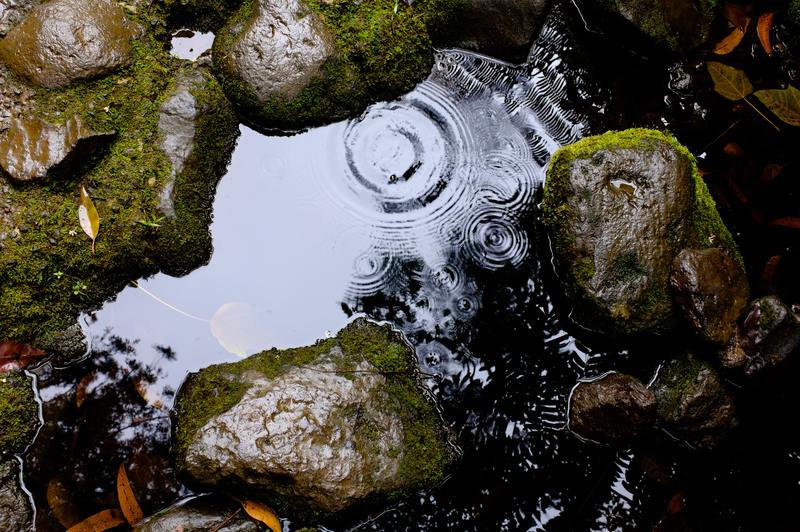The answer to the question of how long does it take for water to mold is less than two days. However, it may depend on the surface where the water mold grows.
You will learn more about this below, so make sure to read the article entirely!

All About Water Mold
Mold does not only devastate solid surfaces like wood or concrete; it also affects water. Learn more about water mold by reading this article until the end!
What is water mold?
Water mold is a broad category referring to microbial build-up on water. However, in truth, it is but a narrow class consisting of chytridiomycosis and oomycete.
Water molds are single-celled organisms that feed on plants. They can occur both on soil and water.
On soil, they break down organic matter, which may be dead leaves. They may cause diseases on your indoor plants, though.
If you encounter white water mold on your indoor plants, read this article regarding white mold on plants.
They also like standing water, which makes pools vulnerable to them. If this is your concern, then read our article about removing water mold on pools.
How does water mold grow?
Like with other forms of mold, water mold develops due to mold spores. When mold spores find an environment that meets all their conditions, they settle there.
After mold spores settle on a surface and form mold, the growth exudes more mold spores to spread to the environment. This pattern is repeated until you deal with your mold problem.
Generally, water mold develops in less than two days after significant water damage. For pools, the timeframe may be a little different.
Since the pool is a moisture-rich environment, the development of mold there is due to bacteria rather than water damage. Debris on pools, for example, serves as a food source and invitation for mold.
What are the effects of water mold on humans?
Prolonged mold exposure is known to give rise to allergies. Mold exposure to the pool may lead to skin allergies or eye irritation.
If you accidentally drink the pool water with mold, then you may experience a stomach upset. You may still suffer from allergy-like symptoms due to mold, even if it’s not from the pool.
For example, if your indoor plants are all infected with mold, you may experience respiratory issues. This experience is especially true if you are the primary caretaker of indoor plants.
Some of the respiratory symptoms of mold are coughing and difficulty breathing. If you have asthma, then mold may exacerbate your condition or trigger an attack.
Either way, you have to deal with your mold problem as soon as possible. Otherwise, the mold may spread to other parts of your house.
What are the signs of water mold?
One of the well-known signs of water mold is build-up. You will notice this with white water molds in pools or white fuzzy growth on your plant’s soil.
Another sign of water mold is the smell. This is more obvious if you have water mold indoors because the airflow is limited.
Steps in removing mold on water
Since we’ve shared mold removal steps on plants and pools, we’ll write about a different mold removal process that involves water mold.
Water mold may also affect your pipes, and they are more challenging to deal with than pools and plants. To deal with water mold in lines, follow these steps:
Step #1. Household bleach
Since pipes are inaccessible, you can pour solutions down the drain to kill the mold. Firstly, measure half a cup of bleach and pour it on the drain.
Let the bleach sit on pipes for an hour. Then, pour two cups of hot water onto the drain to rinse off the bleach.
Run the tap for a couple of minutes before proceeding to the next step.
Step #2. Baking soda
Make a baking soda mixture by dissolving a quarter-cup of baking soda with water. Then, pour it down the drain as well.
Step #3. Vinegar
After pouring the baking soda solution, pour vinegar. Wait for fifteen minutes to maximize the effect of baking soda and vinegar.
Afterward, run hot water on the drain again to rinse off the solutions. These steps should be repeated monthly to keep your pipes mold-free.
How to prevent the development of water mold in your household
The best way to prevent the development of water mold on your pool, plants, and pipes is to clean them regularly. Maintaining them would limit the mold’s food source, therefore preventing mold growth.
An additional tip is to regularly do mold-killing solutions, especially on the inaccessible parts of your house. This would lessen the chance of the spread of mold spores in your home.
Conclusion
It is necessary to know how long does it take for water to mold to better understand the process of mold growth. However, knowledge about its time frame is not enough.
This is why we included the ways to deal with it both through mold removal and prevention. We also hope the part of the article describing the mold effects was enough of a warning.
